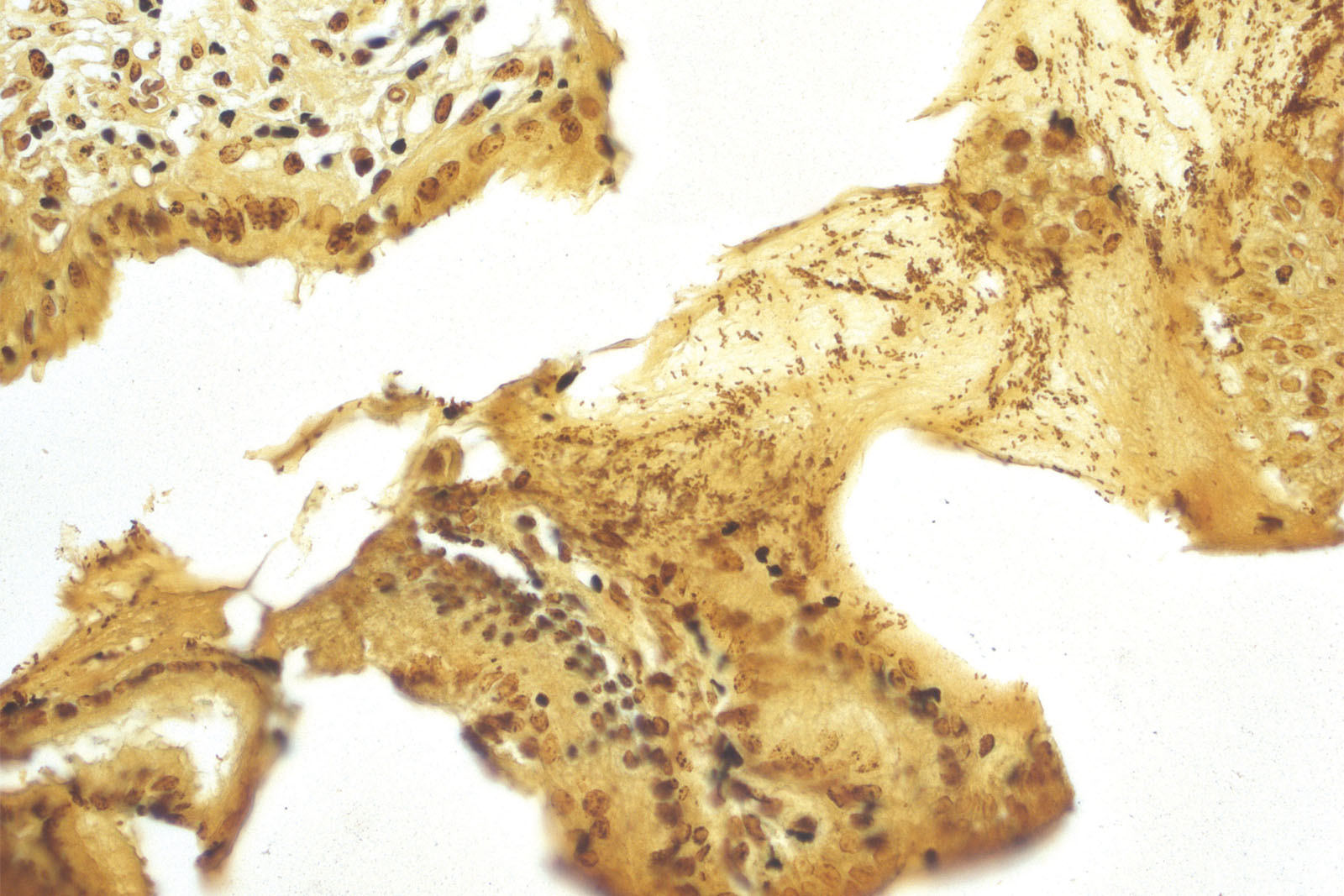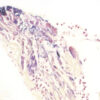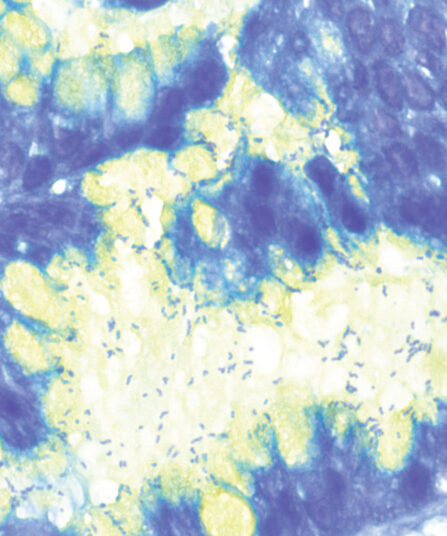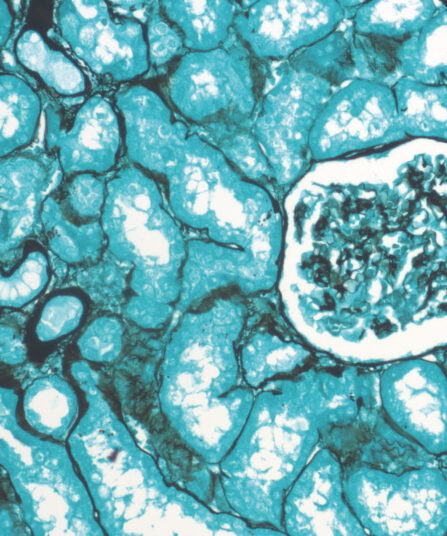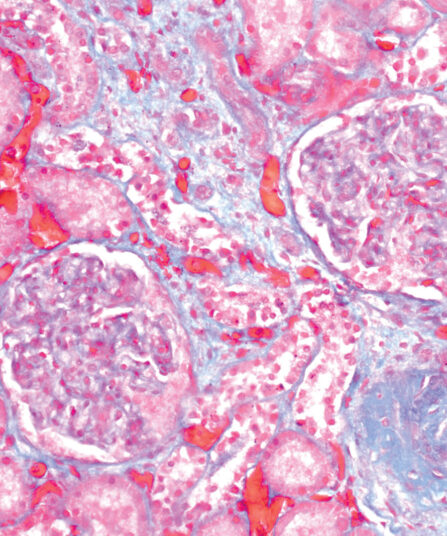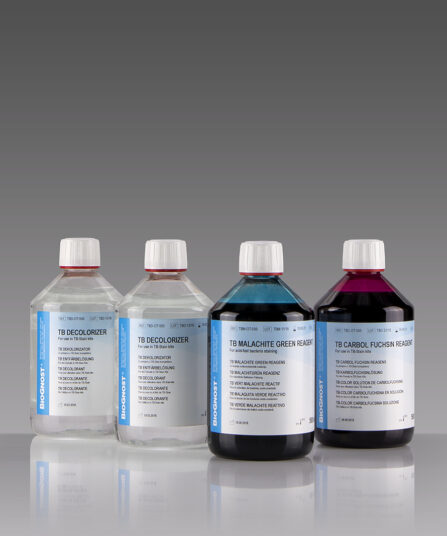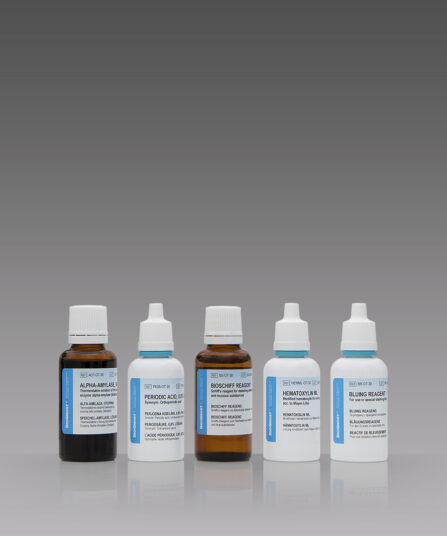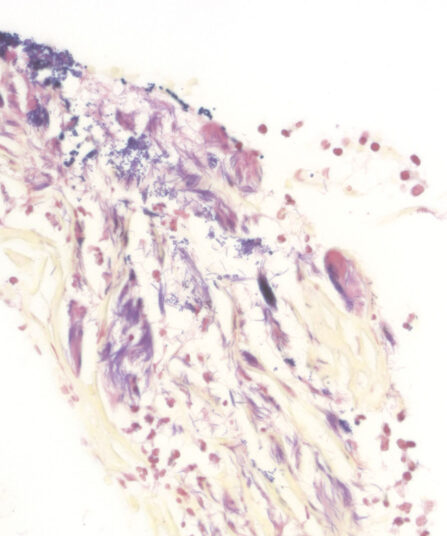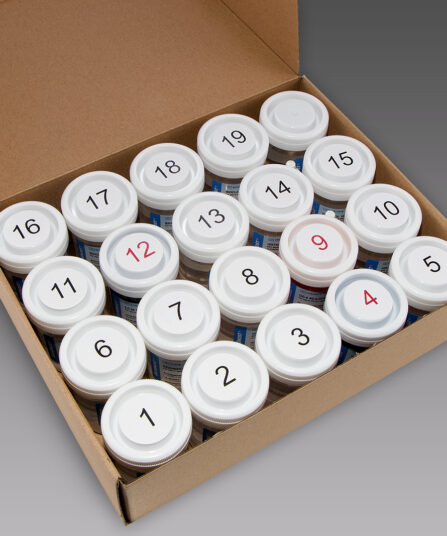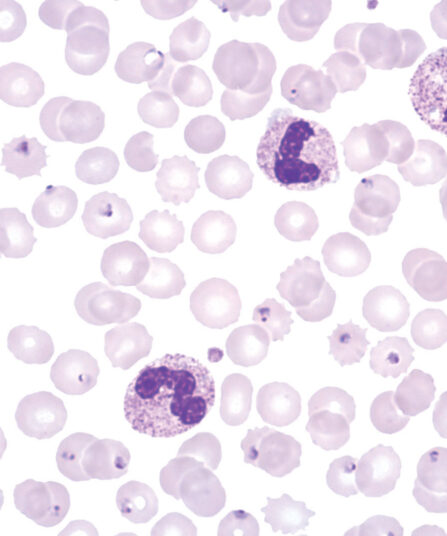BioGnost’s Warthin Starry kit enables staining histology sections and Helicobacter pylori visualisation in a simple way and in a few steps. The kit is distinctive because it contains 12 containers with gelatine used for practical incubation and section staining. By adding other reagents, it is possible to create an active developing solution used for immersing sections and simultaneous staining of 1 to 4 sections. Staining using the Warthin Starry kit is based on reducing silver nitrate to silver using hydroquinone. The formed silver is deposited on the surface of Helicobacter pylori. The microscopic image shows the bacteria-stained dark brown to black, the cells are stained yellow-brown, and the nuclei brown. The bacteria may be detected in the mucus of surface epithelium, in apical glands of the stomach, and in the mucosa of the stomach.
Warthin Starry kit
Five-reagent kit for staining Spirochaeta, Helicobacter pylori, Microsporidia and Legionella pneumophila. The kit contains 12 jars with gelatine that enables both incubation and staining of sections, as well as other reagents that enable precipitation of silver on the bacterial surface. The bacteria are found in the mucus of the surface epithelium, in the apical gastric glands and in the gastric mucosa.
Description
Additional information
| Size | |
|---|---|
| Brand | |
| Stain pack | |
| Stain Category | Fungi, Bacteria and Parasites |
Related products
Stain Kits
Alcian Yellow Toluidine Blue kit
Six-reagent kit for staining Helicobacter pylori in gastric tissue sections. This method is one of the most popular non-silver methods for staining of H. pylori, where bacteria are stained blue in contrast to yellow mucins.
Stain Kits
Grocott kit, stabilised
Seven-reagent kit for visualization of fungi and histological argentaffin structures in general (such as basal membranes). Green counterstain provides clear and visually rich contrast to target structures stained black.
Stain Kits
Gomori Trichrome kit
Five-reagent kit for staining muscle, collagen fibre and nuclei, contains blue counterstain. The kit can be used to contrast skeletal, cardiac or smooth muscle.
Stain Kits
TB-Stain Cold Kit
Three-reagent kit for staining acid-fast bacteria according to Kinyoun. Contains TB Carbol Fuchsin reagent, double amount of TB Decolorizer and TB Malachite Green reagent as counterstain.
4 x 100ml bottles.
Stain Kits
P.A.S. Diastase Kit
BioGnost’s P.A.S. Diastase kit is most commonly used for identifying glycogen in liver. Periodic acid enables the molecules containing glycol groups to create aldehydes affected by Schiff’s reagent staining them violet (magenta). Specific stains are created by applying the PAS method on unsubsti-tuted polysaccharides, mucoproteins and glycoproteins, glycolipids and phospholipids. Alpha-amylase enzyme (also known as diastasis) is used for differentiation between glycogen and other PAS-positive structures by dissolving 1→4 glycosidic bonds, causing the glycogen to remain unstained after the PAS reaction. BioGnost’s P.A.S. Diastase kit uses thermostable enzyme which does not require heating to +37°C to be active, but incubat-ing the section at +37°C is preferred in order to achieve better glycogen breakdown. The same tissue section is used as negative control for this reaction, but the sample is not treated using alpha-amylase.
For 100 tests.
Stain Kits
BioGram Histo kit
Five-reagent kit for identification of bacteria according to Gram. For differentiation between Gram-positive and Gram-negative bacteria in histology sections.
Papanicolaou Rapid Staining Kit, for 100 Tests
Ready-to-use eight-reagent kit (in 18 containers that can be used as staining jars) for rapid progressive gynecology and non-gynecology cytological samples. Contains xylene substitute as clearing agent and xylene substitute-based medium for permanent covering of samples.
PAP-100T for 100 tests
Stain Kits
Field kit 500ml
Ready to use two-reagent kit for rapid and efficient staining and detection of parasites in haematology samples. Primarily used for staining thin and thick blood smears (dense drop) for purpose of diagnosing blood parasites. Reagents are stored in containers that can be used as staining jars.

